Guatemala’s Only Travel Guide You Need For A Great Trip in 11 Easy Steps
- Destinations Americas
Cruisit Team
- October 11, 2022
- 0
- 4910
- 82 minutes read
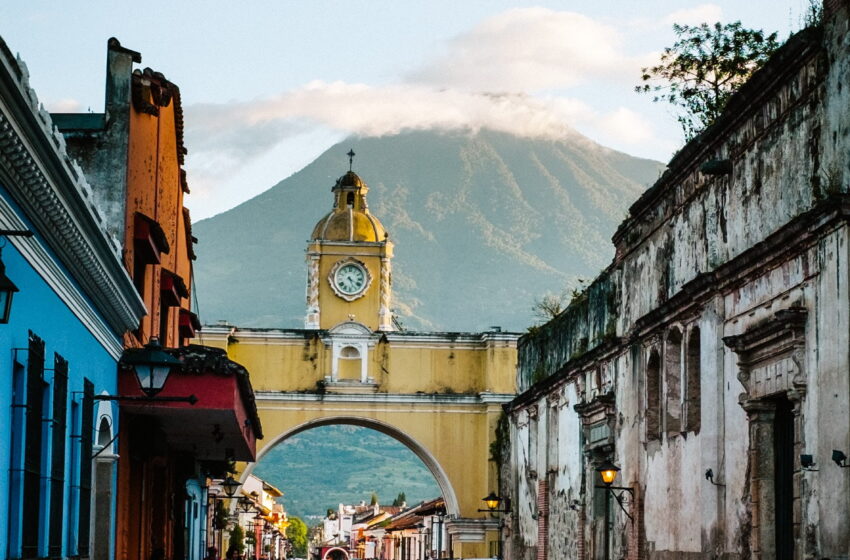
Historical research points to human existence in the country of Guatemala extending back to 12,000 BC, with more substantial evidence establishing a period that dates back to 3,500 BC. However, the unquestionable civilization, with its imprints left all throughout Guatemala, is the Mayan civilization, which thrived from 300 BC to the first millennium AD. During that time, the ancient Mayans had one of the most advanced societies in the Americas. We recognize them for their complicated calendar, astronomical discoveries, and mind-boggling architectural talents. It is controversial how this civilization collapsed, for a variety of reasons ranging from soil exhaustion to climatic change and military warfare may have been to blame. Like many locations in the Americas, colonists did not leave a rock unturned in their path, with little communities of Maya-speaking people who were able to elude them. The Spanish invaders came upon the country around the 16th century and founded Antigua as the capital. Even though rare metals were found, the colony did not have as much economic success as neighboring Mexico and Peru. After three centuries as a Spanish colony, Guatemala earned its independence in 1821. But, like many colonies that have earned independence, it wasn’t as peaceful as many anticipated.
From the time of Guatemala’s independence in 1854 until his death in 1865, Carrera was the country’s de facto leader. A revolution led by Miguel Garca Granados and Justo Rufino Barrios overthrew the conservative leader who took over after Carrera. This made way for a more liberal government. After a number of changes, it was kept up almost constantly until the middle of the twentieth century. Then, in 1873, Barrios took over as leader. He was known as “the Reformer” because of the many social and physical changes he made. When he left office, coffee was Guatemala’s primary export, and the country was on the path to economic growth. His people who took over after him, such as Manuel Lisandro Barillas, Jose Mara Reina Barrios, and then Manuel Estrada Cabrera, kept working to make Guatemala better. They worked to improve the country’s economy and healthcare system, and some even attempted to bring the countries of Central America together. But before he was removed from power, Estrada was able to silence the press, put his opponents in jail, and brutally kill them. Then, a series of temporary presidents who mostly served the coffee industry’s aristocracy until the military revolution led by Jorge Ubico in 1931, which set the stage for a lengthy dictatorship that was finally toppled by a statewide strike in 1944. Then many military juntas grabbed power in quick succession. Resentment was fueled by the government’s control and transfer of land, which sparked a civil war that lasted for 36 years. Problematic, though, was the quick turnover of presidents from the 1970s to the 1980s. Each new president promised to get rid of the junta and bring back democracy. In the 1990s, there were some good things for the economy, but violence and insurgency only got worse until the government and the URNG reached a peace deal in 1996. Still, even in the early 2000s, the standard of living in Guatemala was getting worse, which was a long-term trend. The government still has to deal with a lot of problems, such as widespread corruption, impunity, abuses of workers’ rights, protection of intellectual property, food insecurity, bad education and infrastructure, and large gaps between rich and poor people.
Guatemala is bordered by Mexico from the north, by Belize from the northeast, by the Caribbean and the Guld of Hondorus, by Honduras to the east, and by El Salvador from the southeast. Beautiful Guatemala can be an easy plane or bus ride from these destinations, but getting there is not limited to the bordering countries. There are about five distinct areas across the nation. The Central Highlands describes the region that includes Guatemala City. Lake Atitlan and numerous more contemporary Mayan settlements may be found in the Western Highlands. Temperatures and humidity levels are highest around the Caribbean coast. Additionally, Belize may be reached by boat from the Caribbean coast. The most spectacular Mayan ruins are located in the northern Peten area. The dense jungle vegetation is also concentrated here. The Pacific coast’s beaches and warm weather may be found in the Pacific Highlands.
Despite Guatemala’s economic and social troubles, it is rich in culture and natural beauty. Beyond the most well-known remains in Tikal, Mayan civilization is pervasive across the country. The stunning natural scenery and national parks are equally captivating. There is something for every kind of traveler in Guatemala. Whether you come for the history, culture, natural beauty, or adrenaline-pumping sports, You may lose yourself in the country’s rich history, see active volcanoes, and interact with friendly locals all in one vacation. When it comes to history and art, Guatemala is in a class all its own.
It’s all there in Guatemala. Cities with a colonial feel are perfect for daylong strolls. There are stunning lakes and several active volcanoes, as well as indigenous communities and marketplaces where people wear brightly colored traditional clothing. There are also interesting Maya towns tucked deep in the forest. You may spend weeks just discovering new places in Guatemala. But suppose you just had a week to spend in Guatemala. This is particularly a great destination if you are starting or continuing your trip. If you are starting or ending your trip in Mexico, Guatemala is a great place to go. After all, the Maya civilization was born in Guatemala, a country whose landscape is as vibrant as its people.
“Stunning ancient ruins, dense forests teeming with wildlife, colonial villages with pastel painted buildings and bustling marketplaces, then a look beyond a town, a towering volcano awaits you. This is the scenery you will experience, and once you’ve seen Guatemala, you’ll want to return again and again.”
Antigua, which is near three volcanoes, is a cultural change of pace from Guatemala City. Its narrow lanes are filled with pastel-colored houses, collapsed church arches, columned courtyards, and lots of flowers and fountains. The magnificent Mayan city of Tikal, hidden in the Guatemalan forest, is another must-see for visitors. Tourists who aren’t afraid of danger can see unspoiled landscapes in the jungles and rocky mountains for a fraction of the price of similar trips in more developed countries. The most diverse country in Central America has beautiful landscapes and a culture that goes back hundreds of years. That becomes apparent the moment you step foot there.
Tikal, with its soaring pyramids, is Guatemala’s top tourist attraction. And it’s hard to find fault with this impressive reminder of Central America’s finest civilization. The most obvious signs of this centuries-old civilization are the Maya communities in the highlands, where people still dress traditionally. However, if you take the time to search around an archaeological site, you just might find current altars with fresh sacrifices for the ancient spirits.
One of the most striking physical reminders of when the Spanish ruled Guatemala is its architecture. The most well-known ones can be seen all across Antigua, the former capital, with its well-kept plazas and ancient ruins. Guatemala still has many colorful brick and tile buildings from when it was ruled by the Europeans. These include the grand buildings from the coffee boom in Quetzaltenango, the beautiful cathedral in Guatemala City, and churches and government buildings clustered around central squares in even the smallest villages.
Given that only 2% of Guatemala’s land is used for cities, it’s little wonder the country has such beautiful landscapes. A few beautiful national parks can be found in the Petén region, and a boat trip through the verdant valleys of the Ro Dulce is an experience you won’t soon forget. The Lago de Atitlán, surrounded by volcanoes, is a popular tourist destination. Hikers can also visit the green Cuchumatanes Mountains and the creepy Verapaces Caves. Semuc Champey is a swimming hole that has been shown on a thousand postcards. Here, you can dip your toes in both the Pacific and the Caribbean.
Individuals who are always on the go will find their schedules completely booked once they arrive in Guatemala. Amazing hiking trails through the rainforests and up mountains, miles of tunnels to explore, and what appears to be a zipline strung between every two trees are only the tip of the adventure tourism iceberg in this country. Have a penchant for turning up the heat? How about some paragliding around the lofty Lago de Atitlán? Is it possible to go scuba diving at the same site? The Pacific coast is a popular destination for surfers, so you could get lucky and ride some solid waves. You may, perhaps, find a hammock and leisurely think over your alternatives. Make the call.
As for wildlife, an abundance of animals and fauna can be spotted in Guatemala. With more than a thousand animal species, it’s almost true that everywhere you look there will be a beautiful encounter with wildlife. The deep, lush jungles in the north, which are home to howler monkeys and rare scarlet macaws, stand in stark contrast to the red lava tongues of Guatemala’s volcanoes. To the south, at Livingston, the Caribbean coast is covered with white sand, while in Monterrico, on the Pacific coast, you may see turtles and fantastic crimson sunsets.
Staying on the move will allow you to take advantage of all that Guatemala has to offer visitors. This Cruisit Guatemala travel guide provides an itinerary that strikes a balance between leisure and exploration. Arrive in this untapped paradise in Central America, with a colonial vibe, and enjoy it to the fullest. The following itinerary for Guatemala is tailored to the country’s peak tourist season but can be enjoyed during the shoulder months. With days spent in ancient parts of town in the company of legend, or surrounded by lush peaks and dramatic volcanoes and picture-perfect scenery, and hundreds of species to spot while you explore on your hikes, Guatemala will fulfill your wildest dreams.
Moreover, we will provide you with all the information you need to go across Guatemala with ease by providing you with a comprehensive travel guide. As you read on, you’ll learn about the best of what Guatemala has to offer—its towns, sights, transit options, and more. If you’re pumped up enough, then let’s get started!
- Explore the woods and find El Mirador, the Maya’s most impressive lost city.
- Pedal carelessly across the Guatemalan highlands and around the stunning Lake Atitlan.
- Santiago Sacatepéquez is a great place to go kite flying.
- You may see more of Antigua, including its roofs and hidden courtyards, by hiring a native tour.
- Travel by boat down the Ro Dulce and see the stunning canyons and inlets covered in water lilies that cut through the forest.
- Stop by the Smithsonian’s National Museum of Archaeology and Anthropology.
- Visit the Yaxha monuments If you find the crowds at Tikal to be too much, consider a visit to Quirigua, home to the biggest stelae ever found in a Mayan site, or a hike up Volcán de Pacaya.
- Flores is a tiny island in Lake Peten Itza that you may explore.
- Stop at the El Mirador ruins.
- Inquire about the Dulce River.
- Proceed to the Antigua Market
- Take some time out and visit the most visited beach in the country, Monterrico.
- Enjoy the morning from Indian Nose.
- Riding the bus in Guatemala is a genuine part of the vacation. Many of the intercity buses are repurposed school buses with bright decorations and have earned the nickname “chicken buses.” These buses are a lot less expensive than the other choices aimed at tourists, and they may even be more exciting.
- The most convenient means of transportation for tourists are shuttle buses, taxis, and private cars with drivers.
- It is suggested that you bring US dollars on your trip as it may be more difficult to convert other currencies.
- Larger cities typically have ATMs, but if you plan on visiting a smaller town, you should have cash.
- Always haggle for the best price when purchasing trinkets from an outdoor market.
- Access to the internet has become widespread across the country.
- Learn some Tz’utujil. The elder residents of the Mayan settlements dotted along Lake Atitlan’s beaches may not speak Spanish, leading to some uncomfortable communication gaps.
- However, while most tourists have a pleasant time in Guatemala, the country does have a major crime problem. There is danger of robbery on the highway and on hiking paths. Walking about in the dark is risky at any time, but more so after dark.
- Don’t drink the tap water.
- You may try out several free walking tours at Freetour.com.
- You may find hosts willing to let you crash on their couches in Guatemala, and doing so can be a great way to save money if you’re traveling on a tight budget.
- The majority of museums and other attractions provide discounts of up to fifty percent to students with valid student identification.
- Since a 10% service tax is already included in the total, tipping is not customary in Guatemala. The bill should be paid in full, however it is customary to round up as a courtesy.
- Learn some Spanish before you leave so you may participate more fully in local life.
- Hike with a local guide at all times.
- If you’re a woman traveling alone, it’s best to avoid dangerous situations and stay off the streets at night.
Crime & Scams in Guatemala
A trip to Guatemala may not be the best idea due to the country’s high murder rate. Both violent and property crime rates are exceptionally high there. To make it less likely that something bad will happen, you should be aware and take all the precautions you need to. Zone 1 of Guatemala City is known for its high crime rate; many thefts take place there, particularly in the vicinity of the Central Market and the bus terminal, but the city also has many pleasant and secure neighborhoods where it is pleasant and safe to stroll around throughout the day. Among Guatemala’s major cities, none compares to Guatemala City. Shopping centers, high-rise office buildings, condominiums, movie theaters, and other “first-world” conveniences like these can’t be found anyplace else.
Violence against tourists is uncommon in Guatemala, however solo women visitors should remain vigilant while exploring the nation.
Be especially cautious if you are in public places frequented by foreigners, near official buildings, popular tourist sites, or on public transit. Avoid going to slum regions of the city. Take extra precautions on city streets, especially after dark or if you are alone. Carry no significant sums of money or wear expensive watches or jewelry. Avoid using your phone while walking down the street.
Healthcare in Guatemala While Traveling
The public healthcare system in Guatemala is generally inadequate due to the government’s lack of funding for it. However, some hospitals in the capital. Guatemala City, are so good that Guatemala has a medical tourism sector, attracting people from other Latin American countries and the USA who are looking for more affordable healthcare than they can find at home.
Before every trip, make sure you are up to date on all routine vaccinations. Among the key recommended vaccines globally are yellow fever, chickenpox (Varicella), diphtheria-tetanus-pertussis (DTP), influenza (flu), measles-mumps-rubella (MMR), polio, hepatitis, typhoid, and shingles. If you will be in contact with wildlife, you may want to consider getting a rabies vaccination.
When visiting Guadeloupe, you are legally required to purchase travel medical insurance. So, it is always important to have comprehensive medical coverage when traveling because you never know what you could encounter while overseas, especially if in the event of an emergency, a medical evacuation is a must for your safety.
Only eat foods that are cooked and served hot, avoid food that has been sitting on a buffet, and eat raw fruits and vegetables only if you have washed them in clean water or peeled them.
Only drink beverages from factory-sealed containers, avoid ice because it may have been made from unclean water, and only drink pasteurized milk.
Wash hands often with soap and water for 20 seconds, especially after using the bathroom and before eating. If soap and water aren’t available, use an alcohol-based hand sanitizer that contains at least 60% alcohol. Also, keep your hands away from your face and mouth.
Typical of the tropics, Guatemala has both wet and dry seasons as well as two brief interludes. Altitude and terrain have a significant role in shaping its differing climate. However, unlike the coasts and plains, which remain warm throughout the day, the highlands cool off, especially in the morning, and then remain moderately warm throughout the remainder of the day. Temperatures in La Antigua, Guatemala City, and Quetzaltenango, the country’s three largest cities, are like those of an eternal springtime. Since spring-like weather lasts through most of the year in Guatemala, the country is pleasant to visit at any time. However, the peak dry season is the time to visit Guatemala; the low rainy season is not the best time to go. Year-round, you may expect temperatures between 18 and 28 degrees Celsius.
Shoulder Season
Even though September to October and April to May is at the end and start of the wet season, respectively, you can still take a great advantage of the low prices on flights and accommodation during the short shoulder season. This is one of the best times to visit Guatemala, with lesser crowds which translates to less congestion and lower prices on activities, among other things. However, not every day will be clear and warm, but you will have a better chance at outdoor activities since it’s not at the rainy season’s peak. This transitional period which is similar to spring and fall can save you a lot of money if you’re a backpacker or a budget traveler. The upside to this period is the also the more stable weather than the rainy season. April tends to be as hot as March, and can get uncomfortably hot, especially in the low-lying coastal regions, with the highlands being more moderate.
High (Peak) Season
The peak season in Guatemala spans from November to March, which is typically known as the dry season. This is the best time to visit Guatemala since there is less chance of rain, and temperatures are stable and mostly warm. However, depending on the altitude, the weather may vary. With the highlands being somewhat warm during the day, and chilly in the evenings, compared to the rest of the country. At higher elevations, frost may form, especially during the coldest mornings in December and January. March is a very warm month with temperatures getting intolerably hot, especially in low-lying coastal areas. However, the highlands can be cooler than the rest of the country during March.
Off-Season (Low Season)
From June to August, Guatemala experiences the wet rainy season, which is the country’s off-season. It may be difficult to travel to more remote locations during this period. Additionally, temperatures are typically higher than normal, and rain is practically constant. It’s possible to have sunny days followed by torrential downpours in the evenings or vice versa during this time of year due to the wild swings in temperature and precipitation. Clothing and equipment that can protect you from the elements and speed up the drying process, such as raincoats, quick-drying trousers, and waterproof bags, are thus important for a pleasant journey. The insects that carry malaria, dengue fever, chikungunya, and zika are out in full force during the rainy season. So, it’s important to bring along some insect spray and mosquito repellants, and you might want to talk to your doctor about preemptive measures.
Wearing good waterproof hiking shoes is essential since the continual rain not only delivers lush vegetation and blooming, but also muddy conditions that might make your trip more difficult. There’s also the fact that it takes twice as long to go anywhere because of the weather and rain, which is a major inconvenience. Blackouts are not uncommon in some urban areas. But there are some good reasons to travel during the off season, like more places to stay at lower prices and the chance to see more flowers in full bloom. Even better is visiting during the brief dry time known as the cancula, which brings dry conditions in the middle of the wet season for a short period, typically between July and August. It overlaps with the summer vacation season in the United States, Canada, Europe, and much of the Northern Hemisphere, so there may be an influx of visitors then as well. In the absence of afternoon rain with the cancula, temperatures rise to uncomfortable levels. When the clouds part, though, it’s a wonderful time to go on outdoor adventures, such as seeing Mayan sites in the Petén forest or cruising down the river at Semuc Champey.
By Plane
The most convenient and fastest way to reach Guatemala, is the one used by most travelers, and it is getting there by plane. The biggest portion of tourists arrive through La Aurora International Airport in Guatemala City, the country’s capital. There are also limited flights from Belize City and Cancun to Flores airport, which is close to Tikal. Both of the country’s international airports have been renovated to better serve airlines from the United States and Asia. Avianca, the country’s main airline, has direct flights to Colombia, Costa Rica, El Salvador, and Honduras from Guatemala City’s La Aurora International Airport. The airport also has connections to many US, Central American, and South American cities. destinations. Flights depart North America often; cities including Houston, Dallas, Forth Worth, Miami, Atlanta, and New York may be reached through daily flights. There is currently no nonstop service between the UK and Guatemala.
By Car
All of Guatemala’s neighbors are accessible by road thanks to the Pan-American Highway, which passes through Guatemala. Major crossings into Guatemala may be made from Mexico at Ciudad Hidalgo and Talismán (both close to Tapachula), as well as between Comitán and Huehuetenango. El Florido, which starts in Copán, is the most popular crossing point for travelers coming from Honduras, while San Cristobal is the most popular crossing point for those coming from El Salvador. Melchor de Mencos is the most popular entry point into Guatemala from Belize. However, it isn’t without risk. Infrastructure that is falling apart, a lack of essential services, more crime, and bribery at border crossings are all dangers. Original licenses and registrations are required for all drivers.
By Bus
From most countries, you can ride a bus to your destination. The major cities in Central America and Mexico are linked by long-distance buses, the most luxurious of which are direct executive coaches with on-board toilets and air conditioning. Getting from Guatemala to El Salvador’s capital city, Tegucigalpa, or Honduras’s second largest city, San Pedro Sula, is possible via Tica Bus Company, Pullmantur, or Hedman Alas.
By Boat
You can take a boat to Guatemala from Belize. The major seaports are Santo Thomás de Castilla, Puerto Quetzal, and Puerto Barrios. The Port Authority of Guatemala is a good resource for more details. Guatemala is also a popular port of call for a number of foreign cruise lines. Traveling from Mexico to Guatemala by boat via the River Usamacinta takes around 30 minutes and is a popular option.
By Plane
Since Guatemala is such a tiny country, flying domestically is not a popular option. But it could be a convenient option when wanting to pass the lengthy bus ride to Tikal or Flores. There are regular flights from Guatemala city to Flores and Puerto Barrios on TAG Airlines, or Guatemala city to Flores on Aeromar.
By Car
Having a car is a convenient way of exploring a country, and it is definitely the case in Guatemala too. However, you must know a couple of things before you go ahead and book the car. Traveling independently with a rented car gives you flexibility, and you won’t need any extra papers, as well as the option of being able to use your driving license for 30 days in Guatemala. You could also always rely on an international driving license. You need to be at least 25 years old, and make sure to verify every insurance related terms. It is possible to rent a car from the airports, large towns, and touristic sites. However, the downside is, driving in Guatemala is erratic, and you will need to be highly experienced with such traffic attitude. Visibility can be challenging at night, or when it rains. Many streets are narrow, and parking can be a headache. The last disadvantage is that driving between cities can mean many dangers, from animal crossings, theft, and other conditions that can make it risky. Although tourists are not targeted, theft does occur, and encounters with cartel members could happen if you stray into the wrong roads.
By Taxi
Taxis are available throughout the Guatemala, however, there is the issue with the meter. Metered taxis are more frequent in larger cities like Guatemala City, Antigua, and Quetzaltenango than they are in smaller villages or around Lago de Atitlán. No matter if there is a meter or not, you may have to agree on a price for your ride before you get in.
You can also get an Uber in Guatemala. The cities of Guatemala City and Antigua alone. It’s a terrific way to get to know these towns because the app takes care of all the details, the price is set in advance, and you don’t need to understand Spanish to use it.
By Bus
In Guatemala, bus travel is the most common and cost-effective option.
Since Guatemala’s meager rail network does not offer passenger services, the lowly bus is the country’s primary mode of public transit. There are two types of buses in Guatemala: the first-class Pullman buses, which are more luxurious, and the second-class “chicken buses,” which are remodeled American school buses that travel across the country.
There are frequent trips from Guatemala City to Quetzaltenango, Huehuetenango, Flores (for Tikal), and Panajachel (for Lago de Atitlán) on first-class buses, commonly known as “express buses.” Major cities can reach several coastal towns and the international border crossings with Honduras, Mexico, El Salvador, and Belize via bus.
Yet, not every bus route serves the same purpose. Restrooms are available on some but not all buses. Some feature a television set at the front playing Spanish-dubbed music videos or action flicks, while others are silent and allow you to read or nap. First-class buses cost around twice as much as second-class buses, but they are significantly more convenient, secure, and luxurious.
Chicken buses, also known as camionetas, are more common than Pullman buses and reach nearly every settlement in Guatemala. These former US school buses have been repurposed and given a fresh new style, complete with vivid colors and a plethora of chrome accents. Buses may not carry many hens these days, but they can take almost anything else.
Minibuses, or microbuses as they are referred as in Guatemala, travel over paved highways connecting major towns and along smaller routes inside bigger cities.
By Boat
Livingston on the Caribbean coast and Jaibalito on the banks of Lago de Atitlán are two of the few locations in Guatemala that can only be reached (or are more readily reached) by water. Boats are typically chosen over cars because of the time savings they provide, and this is true in many situations. It takes roughly half an hour by lancha (public speedboat) to get from Panajachel to San Pedro La Laguna on the other coast of Lago de Atitlán, as opposed to two hours by road.
In the event that a boat excursion is part of your travel day, make sure to factor in plenty of extra time. The only time a lancha leaves is when it is completely full, which can happen in as little as a few minutes first thing in the morning or as much as an hour and a half later in the day.
SIM Cards & Calls in Guatemala
Purchase a Guatemalan SIM card from Claro or Tigo in-stores for 10 GTQ (1.30 USD). A Claro SIM card with premium features may be purchased for 199 GTQ (about US$26). You may buy a SIM card and other mobile services at the airport in Guatemala City (GUA – Claro only) For the best 4G coverage and comparable pricing, we advise using a Tigo prepaid sim card. For about $13, you can receive 30 days of unlimited data use and access to a plethora of social networking applications for free. Prepaid SIM cards for use in Guatemala may be purchased virtually everywhere a phone could be purchased, including drugstores and convenience stores. If you’re a tourist in Guatemala, I suggest getting a sim card at a Claro or Tigo store. Because there is where the most helpful resources and advice may be found. The airport in Guatemala City does not have a Claro or Tigo storefront, but you may purchase a Guatemalan SIM card at any of the airport’s convenience stores.
Alternatively, you may also get a prepaid eSim card from companies like Airalo, SIMCorner, HolaFly, or Nomad. All the providers offer data-only plans that may be used with an eSim-enabled phone, so make sure your phone is compatible. It is also possible to sign up for a Solis WiFi Hotspot. Check before you travel because they only serve select areas. Airalo provides the most extensive coverage of over 180 nations.
Local Internet & WiFi in Guatemala
Compared to the rest of the world, Guatemala’s Internet is faster and more reliable. Don’t miss the chance to connect with the world from your smartphone or tablet at any of the many restaurants in Guatemala that offer free Wi-Fi. In general, most online activities in Guatemala can be completed at rates of at least 19 Mbps. It’s a safe bet to assume that your hotel of choice will give internet access, but double check just in case.
Top Places in Guatemala

Volcan Pacaya
Volcano Pacaya is located near Antigua and features public hiking trails. If you plan to climb it, allow yourself plenty of time and supplies. Despite occasional ash clouds, this volcano may be ascended safely in a day. The trek isn’t very steep and takes around 2 hours, so you’ll have plenty of time to enjoy the beauty before reaching the crater’s perspective. Pacaya requires a qualified guide. Cheap tours may just include transportation and a Spanish-speaking guide. Don’t speak Spanish? Hire an English-speaking guide from 250 to 550 GTQ. The volcano last erupted in 2010.
Quirigua
The biggest stelae (straight stone columns covered in drawings or carved into forms) ever discovered in the Mayan civilization were unearthed in the archaeological site of Quirigua, which is located in the southeastern portion of the nation near the border with Honduras. Altars with zoomorphic carvings date to the 2nd to 8th century CE and surround a group of nine stelae in a plaza. Unrestored, the stelae are nevertheless impressive, with the tallest measuring in at a staggering 25 feet in height. The cost of entry is 80 GTQ.
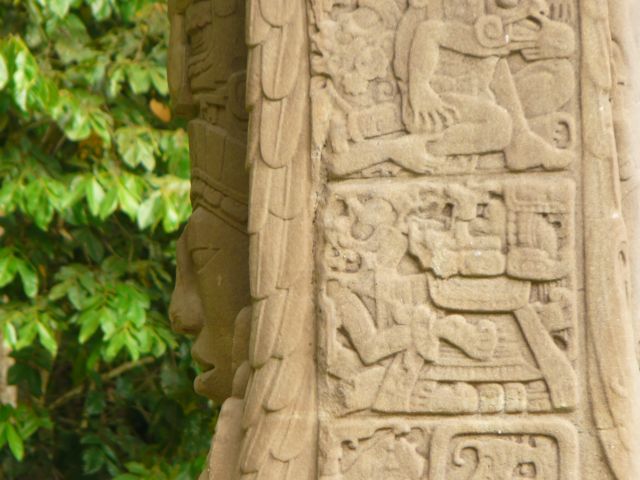

Yaxha ruins
Yaxha, with less visitors, is a good alternative to Tikal. Yaxha is another huge Mesoamerican archaeological site, on par with Tikal. The city ranked as the northeastern region’s third largest. The complex, which includes numerous enormous stone pyramids, was “found” in 1904 and dates back to between 250 and 600 CE. Invest some time perusing old manuscripts and examining the details of carved hieroglyphs. The price of entry is 80 GTQ.
National Museum of Archaeology and Ethnology
This museum, in Guatemala City, is home to the many items recovered from Mayan sites around the nation. The museum was established in 1898 and is a great resource for learning about Mayan history and culture, since it has more than 20,000 objects. The price of entry is 60 GTQ.
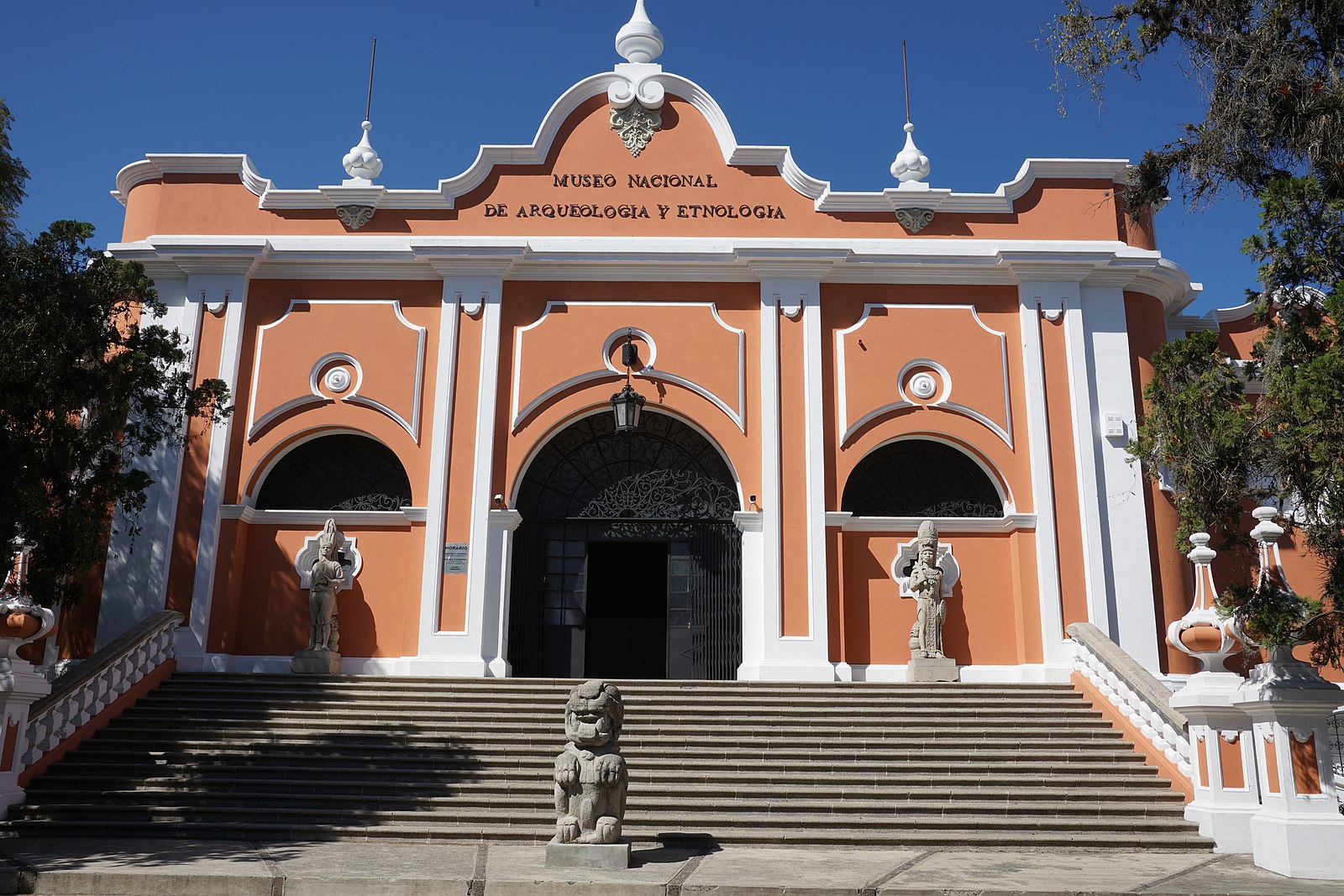

Chichicastenango Market
This market, often known as Chichi, is one of the best places to go shopping in all of Guatemala. Located around two to three hours southwest of Guatemala City, it sells a wide variety of handcrafted goods made by locals, including textiles, masks, woodwork, ceramics, and more. If at all feasible, time your trip to coincide with one of the city’s many festivals.
7-day Itinerary in Guatemala
Day 1
Arrive in Guatemala City
Arrive in Guatemala City, through La Aurora International Airport (GUA), and then head to your chosen hotel or lodging. What most visitors to Guatemala usually do is skip Guatemala City altogether, and its’s a city full of attractions to see. So, either relax and take it easy, or start touring the city’s top attractions right away after dropping your bags. Zona 13 in the heart of the city is where you’ll find the airport. Depending on the volume of traffic, the trip should take no longer than 5 minutes. Relax and get comfortable before your trip begins. If you arrived first thing in the morning, you will most likely check into your hotel before noon, and have much more time to run around.
First, Head to the National Museum of Archaeology and Ethnology. If you want to learn the basics of Guatemala’s rich cultural past, this is a great place to start. The next stop should be the Catedral Metropolitana, a Neo-Classical church built in the 19th century that is home to some very remarkable works of art and history. Then visit the National Palace of Culture, formerly the residence of the president of Guatemala. Then go to one of the newest malls in Guatemala, Paseo Calaya, in the afternoon. You may go take a stroll, go shopping, and eat at several fantastic restaurants in the city before you head to your accommodation.
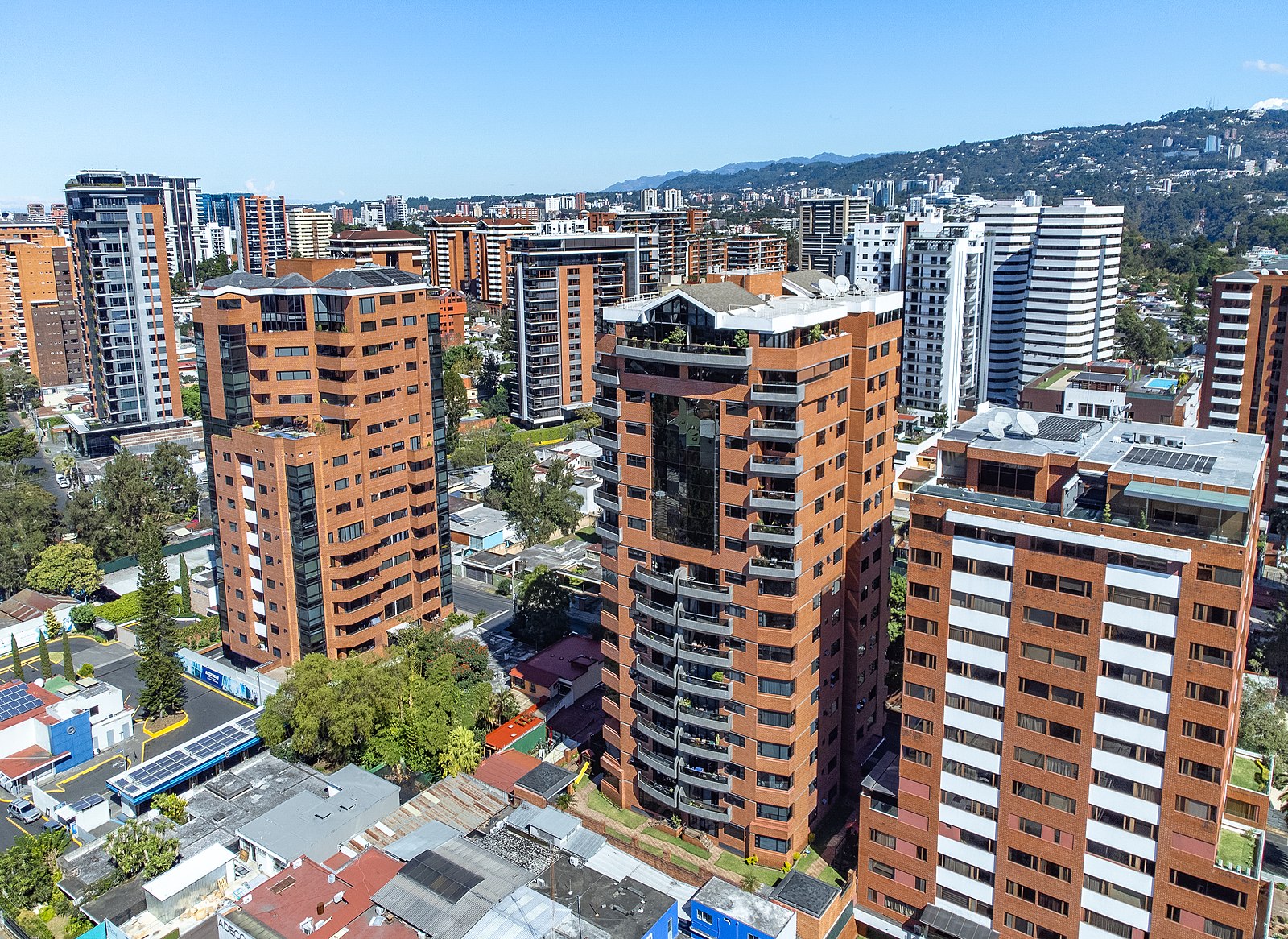
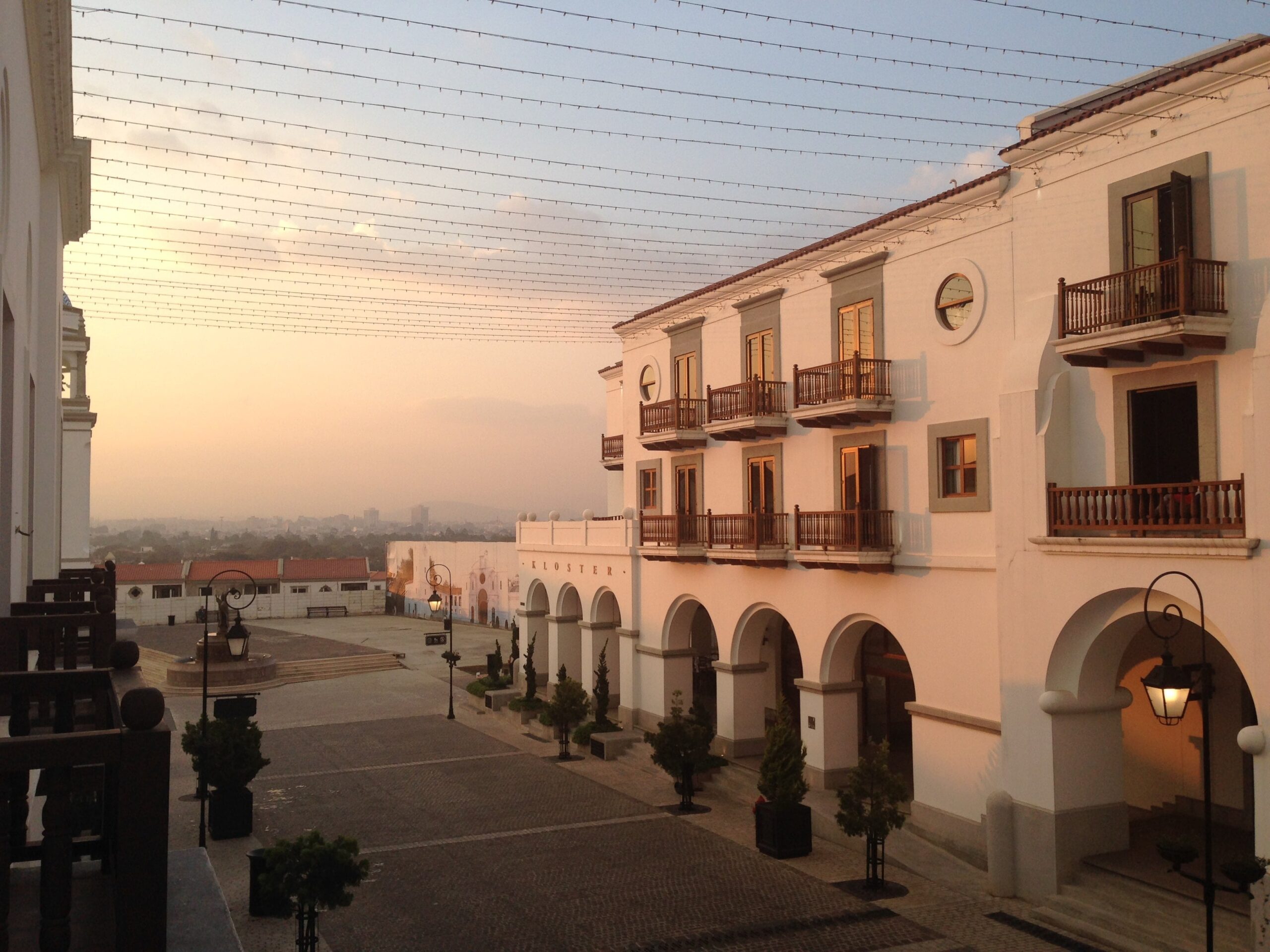
- Backpacker:
- Budget:
- Mid-range:
- Luxury:
Real InterContinental Guatemala
Hotel Vista Real Guatemala
Barcelo Guatemala City
Radisson Hotel & Suites Guatemala City
The Westin Camino Real
When it becomes dark, a foreign city may be twice as dangerous - especially if you don't understand the language and are unfamiliar with the area. There is some reason to be alarmed about walking alone in the city since there is a somewhat high crime rate in Guatemala City, with some of the most prevalent with tourists are pickpockets. You could walk safely at day, but be especially wary while walking at night and be alert in crowded areas or unlit alleys or streets. You can always take taxis, if you don't feel comfortable, Be wary of petty crime by taking precautions mentioned in the safety section above.
From the Airport to Guatemala City's Center


Day 2
Get Enchant in Antigua
On day two, you’ll escape the metropolis for Antigua, a tiny colonial city in the southern portion of Guatemala surrounded by mountains. This lovely city, founded by Spanish colonists in the 1500s, is well-known for its gorgeous colonial structures, Baroque-style architecture, warm welcome, and thriving culture. In 1979, Antigua became a part of the UNESCO World Heritage List.
From Guatemala City, you can take a minivan shuttle to Antigua by contacting your hotel’s front desk or a local travel agency. You can also take a cab straight to Antigua, but that will cost you extra. Uber has recently started operating in the nation, so you may give them a try. The ride will cost you between 100 GTQ and 150 GTQ (13.50 USD and 20 USD) and take around 50 minutes to complete. Check into your hotel or hostel of choice on the day you arrive in Antigua, and take it easy as you get acquainted with the area. You can go for lunch at Hector’s Bistro followed by a pleasant afternoon at the Plaza Central Park.
- Backpacker:
- Budget:
- Mid-range:
- Luxury:
The San Rafael Hotel
El Convento Boutique Hotel
Porta Hotel Antigua
Hotel Cirilo
Camino Real Antigua
When it becomes dark, a foreign city may be twice as dangerous - especially if you don't understand the language and are unfamiliar with the area. There is some reason to be alarmed about walking alone in the city since there is a somewhat high crime rate in Antigua, with some of the most prevalent with tourists are pickpockets. You could walk safely at day, but be especially wary while walking at night and be alert in crowded areas or unlit alleys or streets. You can always take taxis, if you don't feel comfortable, Be wary of petty crime by taking precautions mentioned in the safety section above.
Day 3
Exploring Antigua
Enjoy a hearty breakfast in the comfort of your hotel or venture out to try some of the best local fare at places like Panaderia y Café Santa Clara. In the morning, do what the locals do and visit the market on the street just outside the main bus terminal in Antigua. Produce from the highlands surrounding Antigua may be found at this market in great condition. Move on to Casa Santo Domingo, a converted convent-turned-hotel-and-museum. Stop by the Iglesia de La Merced, a Baroque church built in the 18th century, after lunch. Cathedral of Santiago is yet another magnificent cathedral in the city. Afternoons are perfect for venturing out and discovering the breathtaking landscapes that surround Antigua, such as those seen at Cerro de la Cruz.
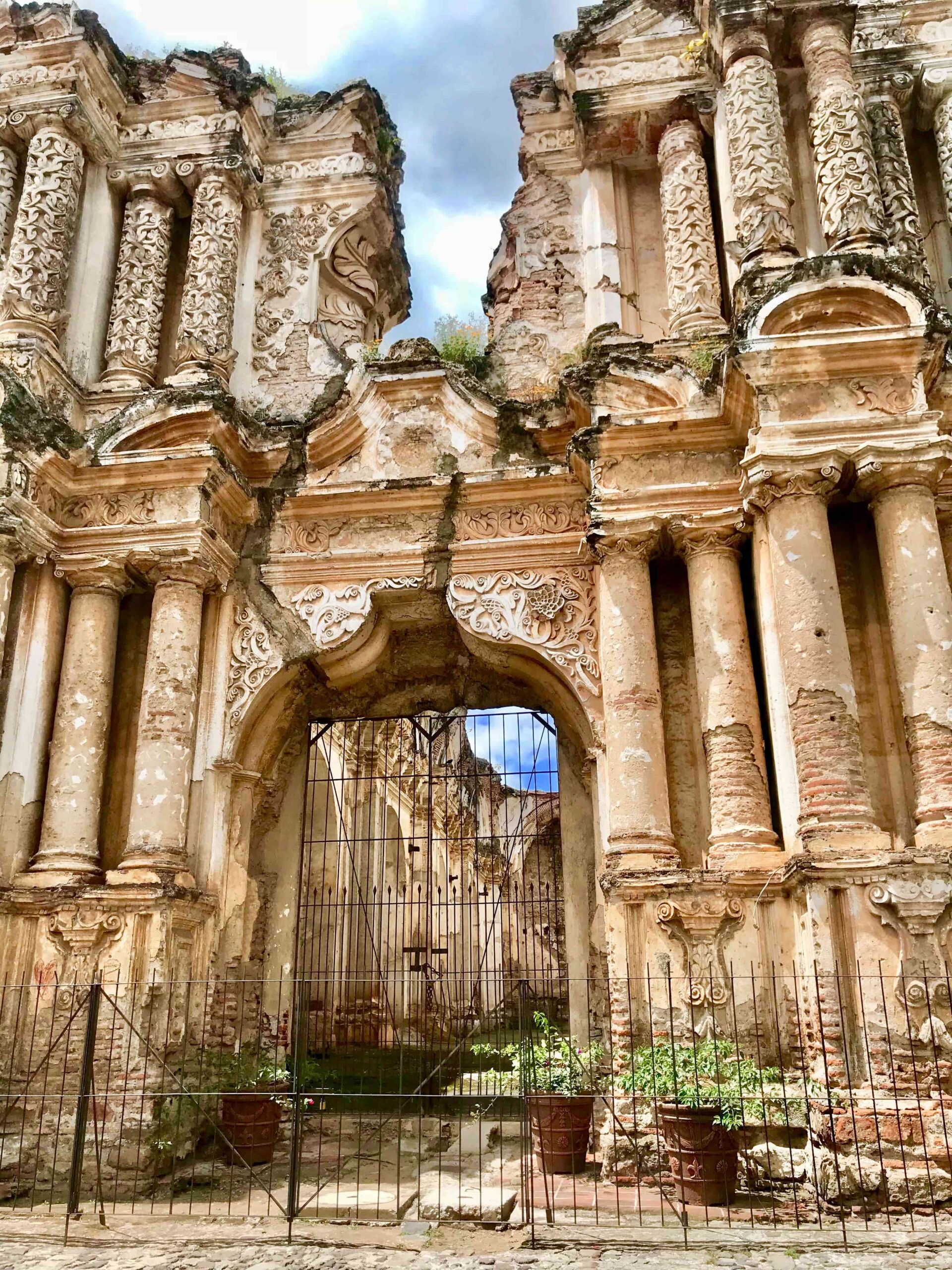
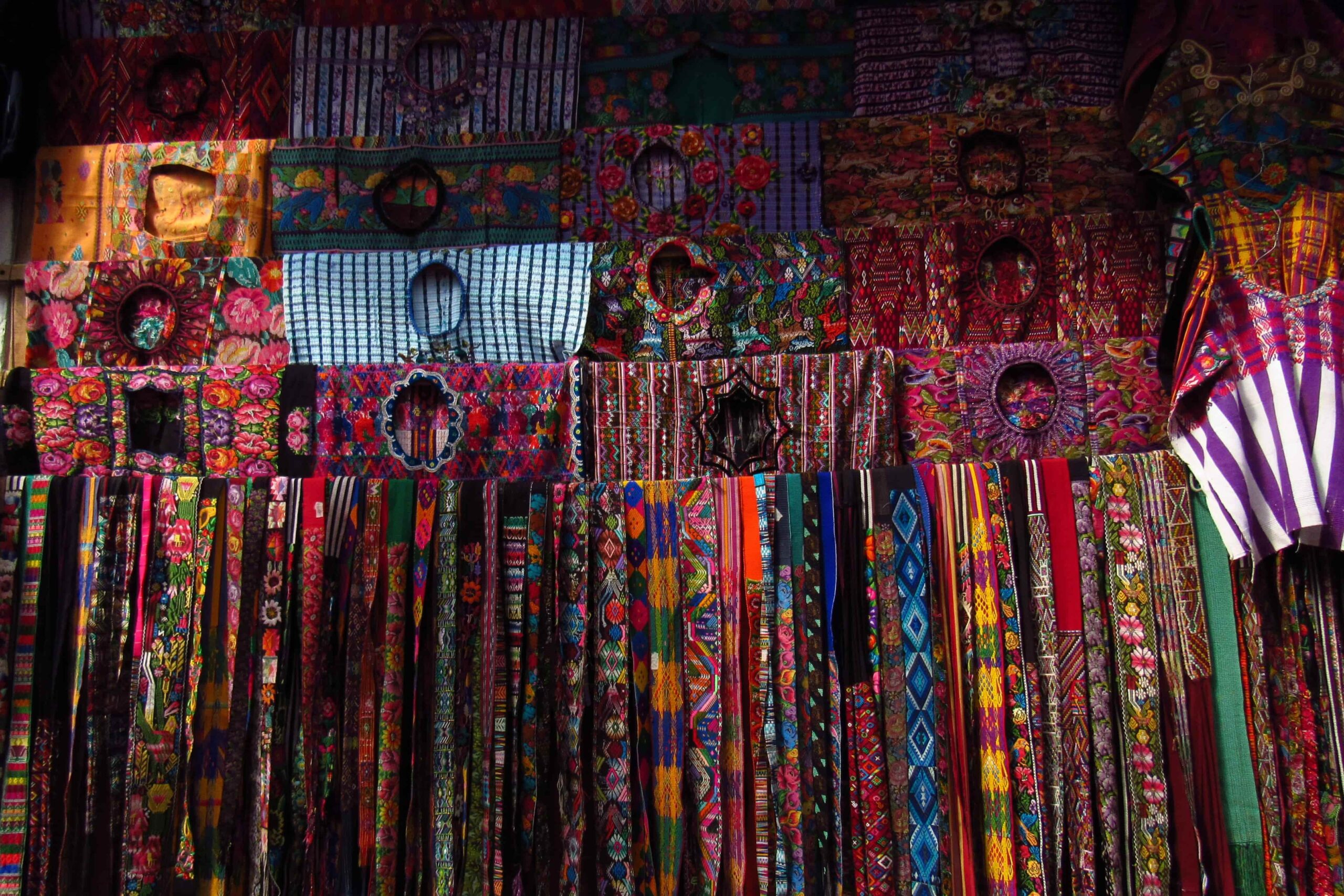
Day 4
Day Trip to Chichicastenango
At just over an hour and a half, you may be in Chichicastenango, one of the most interesting day trips you can do from the historic city of Antigua. Chichicastenango is rich in history and culture as a major Mayan commercial hub. There is nothing stopping you from winging it on your day trip, but a guide will help you better understand the cultural and historical significance of your surroundings. Most daylong excursions will take you to the neighborhood’s outdoor market, several of the area’s churches, and a few of the neighboring villages. There will be a lot of walking involved today, so make sure you have on shoes that are comfortable for long periods of standing and walking.
Day 5
Atitlan’s Charm
Lago de Atitlán (Lake Atitlán) is a picturesque lake about two hours drive west of Antigua, surrounded by historic Mayan settlements. It is highly recommended that you have a guided tour of Chichicastenango, just as you did with your entire day there. Not all Mayan towns can be seen in a single day, but if you only have time for three, make them San Pedro la Laguna, San Juan la Laguna, and Santiago Atitlan.

- Backpacker:
- Budget:
- Mid-range:
- Luxury:
Hotel Tikal Inn
Jungle Lodge
Hotel Jaguar Inn Tikal
La Lancha Lodge
Camino Real Tikal
When it becomes dark, a foreign city may be twice as dangerous - especially if you don't understand the language and are unfamiliar with the area. There is some reason to be alarmed about walking alone in the city since there is a somewhat high crime rate in Tikal, with some of the most prevalent with tourists are pickpockets. You could walk safely at day, but be especially wary while walking at night and be alert in crowded areas or unlit alleys or streets. You can always take taxis, if you don't feel comfortable, Be wary of petty crime by taking precautions mentioned in the safety section above.
If you're short on time, you may skip Lago de Atitlán and instead take a short domestic flight from Guatemala City to Tikal, where the greatest excavated Mayan site is located. Flores Airport (FRS) is the closest airport, and TAG Airlines operates four flights daily between Flores Airport and Guatemala City (one-way tickets start at 140 USD). Avianca and Hahn Air Systems are two more airlines that fly this route. (they each make the trip twice a day; see here for the most recent pricing) Staying at a nearby hotel will allow you to enjoy the sight without having to compete with other visitors after the tour buses leave.

Day 6
Head to Tikal National Park
Tikal National Park, one of the most important sites of ancient Mayan civilisation, is a must-see for anybody traveling through Central America. It was a Guatemalan expedition in the early 19th century that uncovered the ruins, which were then designated as a UNESCO World Heritage site in 1979. To get the most out of the location, I recommend signing up for a guided tour. Joining a guided tour is the best way to get insight into the incredible achievements of ancient civilisation, which include some of the world’s most intricate buildings, observatories, and monoliths. Temple I, dedicated to the Grand Jaguar, and Temple II, dedicated to the Masks, are the two most famous structures at this historic site (Temple II).
Day 7
Last Hours…
Prepare to be taken to the airport by 5:00 a.m. so that you may catch your flight back to Guatemala City that evening. In order to get some rest or do some last-minute souvenir buying, you may want to book a flight for the evening.
This concludes the recommended itinerary for your week in Guatemala. You can stay for as long as you like, or until you’ve seen everything that piques your interest. The greatest way to get to know a nation is to immerse yourself in its culture, eat its best cuisine, and talk to its people. Whenever you feel the pace picking up too quickly, rethink the order in which you want to see attractions. Blessings on your journey!
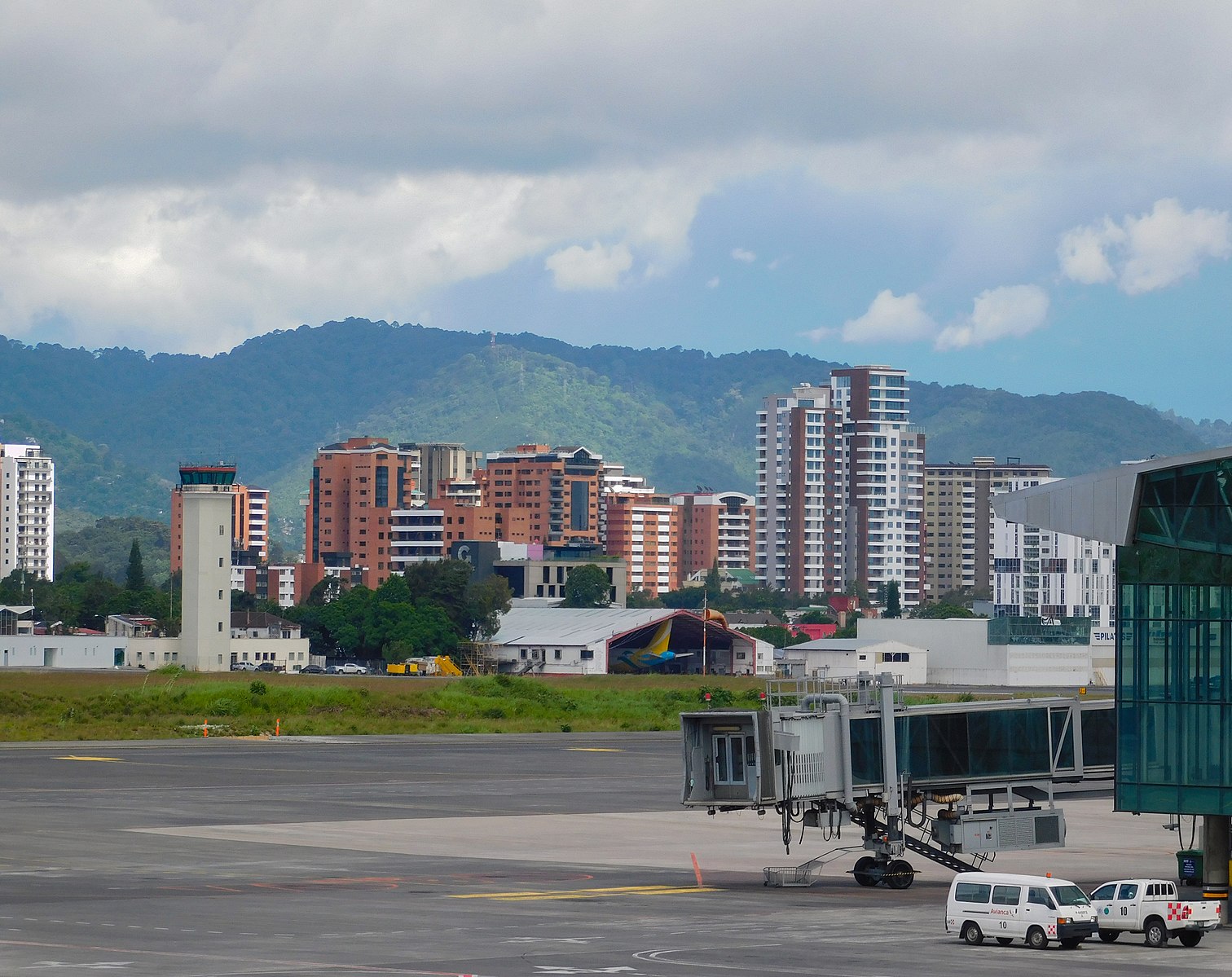
The Most Popular Food in Guatemala
In Guatemala, the Mayan culture has a significant impact on the cuisine, but it also incorporates certain elements from it’s colonial past from Spain. Meals throughout Guatemala are mainly regional, which means you might not find it again elsewhere as you move around the country. Maize is the predominant staple in many meals, and was farmed in the Guatemalan highlands since prehistoric times, making it part of the heritage. You can find restaurants in major tourist destinations that provide a wide array of meals, however, in rural destinations, you will likely be served the regional dishes. One thing to note is that Guatemalan meals are not as spicy as Mexico, which is good news for some, and bad news for the accustomed tongue. Breakfasts in Guatemala usually consists of corn tortillas, beans, eggs, plantain, and coffee. Chicken and beef are widely used around Guatemala. Vegeterians will find a variety of meals that they can enjoy in their visit to Guatemala.

Chicken Pepián
If Guatemala were to claim a national dish, it would likely be the pepián. One of the oldest meals in Guatemala, this savory stew is the product of a melding of Spanish and Maya culinary traditions. Beef or pork can be substituted for the chicken in this dish. Fruit and vegetables (often pear, squash, carrot, potato, and maize) and a plethora of spices are used in all preparations of the meal. Traditional accompaniments include rice and tortillas.

Frijoles Negros
Black beans are the star ingredient in this Guatemalan meal that has a consistency similar to that of a hearty soup. In most cases, it is seasoned with salt, ham hocks, onions, garlic, tomatoes, cumin, oregano, chili peppers, vinegar, and a variety of other ingredients.

Pupusas
Visitors to Guatemala on a tight budget will be happy to know that affordable and filling pupusas can be found just about anywhere. Stuffed thick corn tortillas are fried till crisp on the outside and squashy on the inside, and then filled with refried beans, cheese, and/or pork. Traditional toppings for a pupusa include fresh salsa and shredded cabbage.
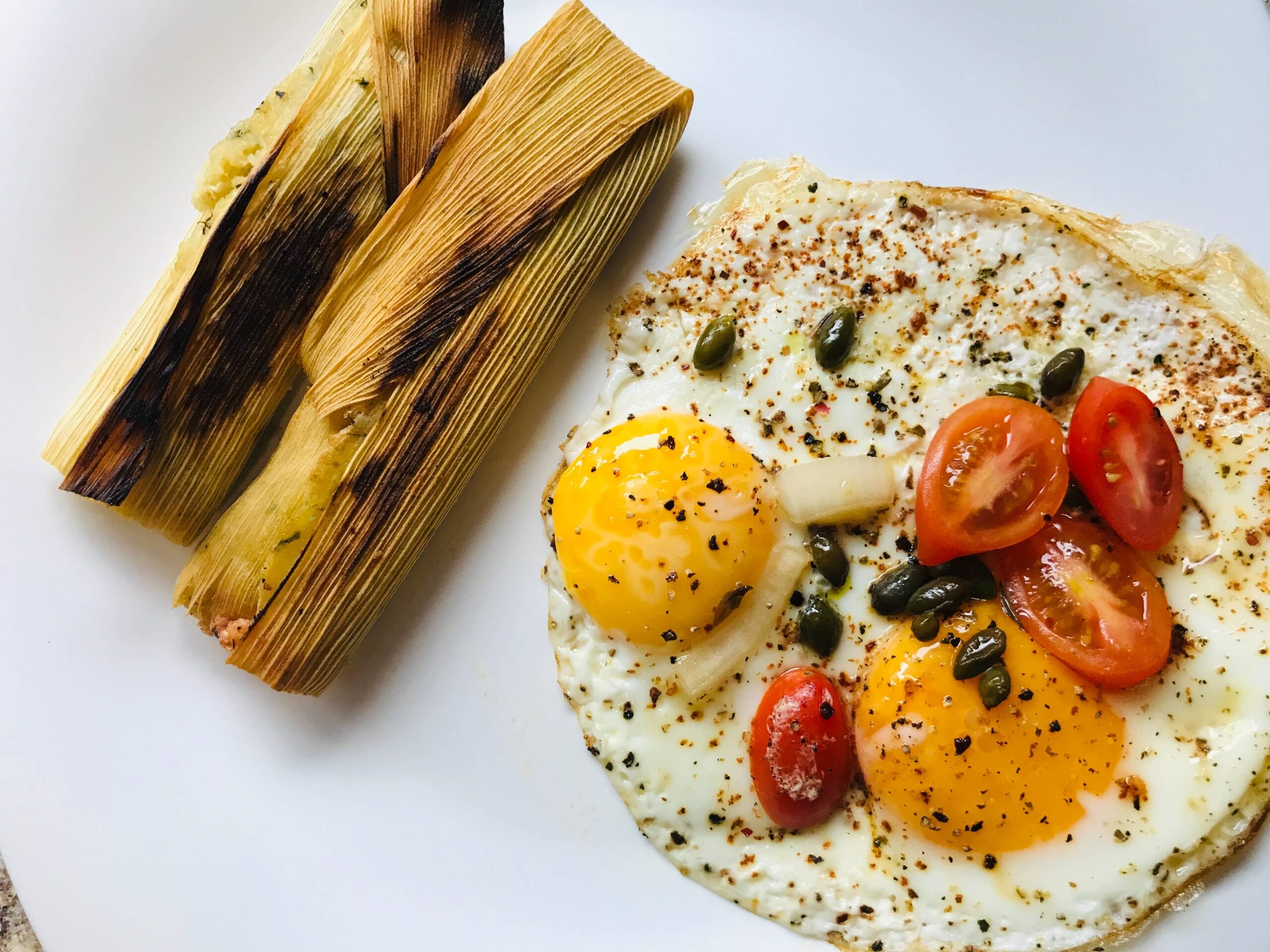
Tamales
Tamales are a delicious delicacy that are enjoyed all throughout the nation. Corn meal is used as the base for the dish, which is then stuffed with a variety of ingredients ranging from meat and cheese to veggies. They are then steamed while still in the banana leaves until they are completely done.

Churrasco
This dish is well-liked across the country and is frequently served at parties and festivals. Chicken is grilled and served with chirmol. Chopped tomatoes and onions are the base of a crimson sauce called chirmol. Common accompaniments include corn, guacamole, roasted potatoes, black bean stew, and rice or tortillas.
What's the Travel Budget for Guatemala
Flights
- Flights start at roughly $150 from nearby countries. Tickets however on average cost around $750 and can cost way more depending on which class and from which country you depart from.
Accommodation
- Nomad Backpacking style travelers can expect to spend around $130 for a week
- Budget travelers can expect to spend around $210 for a week
- Mid-range travelers can expect to spend around $400 for a week
- Luxury travelers can expect to spend around $750 for a week
Food Budget (Three meals and drinks)
- Nomad Backpacking style travelers can expect to spend around $12 per person per day
- Budget travelers can expect to pay around $20 per person per day
- Mid-range travelers on average would cost $25 to $35 per person per day
- Luxury travelers can expect to pay around $40 to $70 per person per day
Overall Budget Styles (Not including Flights, Tours, Transportation, or Car Rental)
- Nomad Backpacking style travelers can expect to spend roughly $270 for a week
- Budget travelers can expect to spend close to $410 for one person for a week
- Mid-range travelers can expect to spend approximately $780 for one person for a week
- Luxury travelers can expect to spend around $1,430 for one person for a we7
Flights
- Flights start at roughly $150 from nearby countries. Tickets however on average cost around $750 and can cost way more depending on which class and from which country you depart from.
Accommodation
- Nomad Backpacking style travelers can expect to spend around $130 for a week
- Budget travelers can expect to spend around $210 for a week
- Mid-range travelers can expect to spend around $400 for a week
- Luxury travelers can expect to spend around $750 for a week
Food Budget (Three meals and drinks)
- Nomad Backpacking style travelers can expect to spend around $12 per person per day
- Budget travelers can expect to pay around $20 per person per day
- Mid-range travelers on average would cost $25 to $35 per person per day
- Luxury travelers can expect to pay around $40 to $70 per person per day
Overall Budget Styles (Not including Flights, Tours, Transportation, or Car Rental)
- Nomad Backpacking style travelers can expect to spend roughly $270 for a week
- Budget travelers can expect to spend close to $410 for one person for a week
- Mid-range travelers can expect to spend approximately $780 for one person for a week
- Luxury travelers can expect to spend around $1,430 for one person for a we7
Flights
- Flights start at roughly $150 from nearby countries. Tickets however on average cost around $750 and can cost way more depending on which class and from which country you depart from.
Accommodation
- Nomad Backpacking style travelers can expect to spend around $130 for a week
- Budget travelers can expect to spend around $210 for a week
- Mid-range travelers can expect to spend around $400 for a week
- Luxury travelers can expect to spend around $750 for a week
Food Budget (Three meals and drinks)
- Nomad Backpacking style travelers can expect to spend around $12 per person per day
- Budget travelers can expect to pay around $20 per person per day
- Mid-range travelers on average would cost $25 to $35 per person per day
- Luxury travelers can expect to pay around $40 to $70 per person per day
Overall Budget Styles (Not including Flights, Tours, Transportation, or Car Rental)
- Nomad Backpacking style travelers can expect to spend roughly $270 for a week
- Budget travelers can expect to spend close to $410 for one person for a week
- Mid-range travelers can expect to spend approximately $780 for one person for a week
- Luxury travelers can expect to spend around $1,430 for one person for a we7
Flights
- Flights start at roughly $150 from nearby countries. Tickets however on average cost around $750 and can cost way more depending on which class and from which country you depart from.
Accommodation
- Nomad Backpacking style travelers can expect to spend around $130 for a week
- Budget travelers can expect to spend around $210 for a week
- Mid-range travelers can expect to spend around $400 for a week
- Luxury travelers can expect to spend around $750 for a week
Food Budget (Three meals and drinks)
- Nomad Backpacking style travelers can expect to spend around $12 per person per day
- Budget travelers can expect to pay around $20 per person per day
- Mid-range travelers on average would cost $25 to $35 per person per day
- Luxury travelers can expect to pay around $40 to $70 per person per day
Overall Budget Styles (Not including Flights, Tours, Transportation, or Car Rental)
- Nomad Backpacking style travelers can expect to spend roughly $270 for a week
- Budget travelers can expect to spend close to $410 for one person for a week
- Mid-range travelers can expect to spend approximately $780 for one person for a week
- Luxury travelers can expect to spend around $1,430 for one person for a we7
If you want to know what to pack, read this list below:
- This is a conservative Central American country with warm weather that tends to get hot in the summer and rainy in the winter, dress accordingly
- Raincoat or Light Waterproof Jacket
- Hiking Boots or Sturdy Sneakers (Shoes You Don’t Mind Getting Wet)
- Sunscreen
- Insect Protection – Repellent and Clothing
- Sunglasses and Sun Hat
- Water Shoes
- Beach Towels/Sarong
- Dry Bag
- Money Belt or Cross Bag
- Portable Medical Kit
- Flashlight or Headlamp
- Copies of your passport.
- Get all the needed vaccinations before traveling
- A power bank is a must in any travel.
- Always have some cash with you just in case there are no ATMs and if you are dealing with a business that solely accepts cash
- Get yourself an adapter for your gadgets
- 1 toothbrush
- 1 tube of toothpaste
- 1 razor
- 1 package of dental floss
- 1 small bottle of shampoo
- 1 small bottle of shower gel
- 1 towel
- Deodorant
- Band-Aids
- Hydrocortisone cream
- Antibacterial cream
- Earplugs
- Tylenol
- Hand sanitizer (germs = sick = bad holiday)
- A key or combination lock
- Zip-lock bags
- Plastic bags (great for laundry)
- Universal charger/adaptor
- LifeStraw (A water bottle with a purifier)
- 1 dry shampoo spray & talc powder
- 1 hairbrush
- Makeup you use
- Hairbands & hair clips
- Feminine hygiene products
Clothing For Boys
- 1 pair of jeans or khaki pants
- 1 pair of shorts
- 1 bathing suit
- 5 T-shirts
- 1 long-sleeved T-shirt
- 1 pair of flip-flops
- 1 pair of sneakers
- 6 pairs of socks
- 5 pairs of boxer shorts
Clothing For Girls
- 1 swimsuit
- 1 sarong
- 1 pair of stretchy jeans
- 1 pair of leggings
- 2-3 long-sleeve tops
- 2-3 T-shirts
- 3-4 spaghetti tops
- 1 light cardigan
Want to plan your own trip, here are some of the best resources that can help you
- Skyscanner – They search small websites and budget airlines that larger search sites tend to miss. They are hands down the number one place to start.
- Momondo – This is another favorite flight search engine because they search such a wide variety of sites and airlines. Always check here too.
- Booking.com – The best all-around booking site that constantly provides the most affordable and lowest rates. They have the widest selection of budget accommodation.
- Couchsurfing – This website allows you to stay on people’s couches or spare rooms for free. It’s a great way to save money while meeting locals who can tell you the ins and outs of their city. The site also lists events you can attend to meet people (even if you’re not staying with someone).
- Intrepid Travel – If you want to do group tours, go with Intrepid. They offer good small group tours that use local operators and leave a small environmental footprint.
- Grassroots Volunteering – For volunteering, Grassroots Volunteering compiles a list of good local volunteer organizations that keep the money within the community.
- Get Your Guide – Get Your Guide is a huge online marketplace for tours and excursions. They have tons of tour options available in cities all around the world, including everything from cooking classes, walking tours, street art lessons, and more! It has the world’s largest collection of things to do with more than 30,000 activities in 7500 destinations.
- SafetyWing – Safety Wing offers convenient and affordable plans tailored to digital nomads and long-term travelers. They have cheap monthly plans, great customer service, and an easy-to-use claims process that makes it perfect for those on the road.
- Trip Advisor: Check the reviews and then book your accommodation. TripAdvisor is where you go when you want to compare prices with multiple accommodation providers.
- VRBO: is the main search engine to use when you are looking for a home or apartment rental. It can sometimes be cheaper than hotels and it is the best way to stay in areas that offer a more local feel.
- Hostelworld: With one of the largest databases of hostels in the world, Hostelworld is the go-to site when you are looking for budget accommodation.
- Rome 2 Rio: If you want to see how to get somewhere by plane, train, bus, ferry, or car Rome2Rio lays it all out for you as well as related costs.
- World Nomads Insurance: When traveling you should always have travel insurance. We have found the best bang for your buck is by far World Nomads.
Final Thoughts on Guatemala
Guatemala is appealing for many reasons including its rich history and culture, which can be seen in its traditional and ancient buildings and rural landscapes, its unusual and beautiful landmarks, not to mention that the country has a Biosphere Reserve designated by UNESCO. The unbelievable warmth the locals give and the warm weather, its exciting events and festivities, and its vivid picture-perfect surroundings of highlands and pristine waters, ideal for sunbathing and watching beautiful sunsets. Evidence suggests that Guatemala’s history extends back much further than 3,000 BC which solid evidence suggests. A piece of a fallen Mayan civilization and a meeting point for a number of different cultures; one of the top travel destinations. With its stunning scenery, wide variety of wildlife, and intriguing historical sites, Guatemala is quickly becoming a popular tourist destination, especially for its tropical activities that include kicking back at the pristine beaches or witnessing the beautiful sunsets on volcanos, or a beach. Are you planning on going on a trip to Guatemala?
Have you ever been to Guatemala? Post your thoughts, questions, and concerns down below.